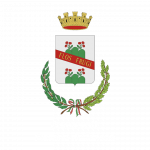A fitting end to a meal
Dense, full-bodied and aromatic, Nocino is the liqueur par excellence at the end of a Modenese meal.
In a good Nocino, the flavour of walnuts must stand out. The ingredients are simple: walnuts, alcohol and sugar. Depending on family recipes, some people add small amounts of spices such as cloves or cinnamon. The choice of walnuts is of paramount importance: if possible organic, they should be picked at the right time when they do not yet have a shell, but a kind of jelly that makes them soft.
The preparation of Nocino begins in the second half of June. Traditionally, the walnuts should be harvested on the night of St John, between June 23 and 24. The ingredients are then macerated in the sun in airtight containers and stirred from time to time. After about 2 months, the liqueur is filtered and placed in dark-coloured bottles.
You can drink Nocino at the end of a meal as a digestive or use it as a topping for ice cream, in a chocolate cup or as a filling for chocolates.









